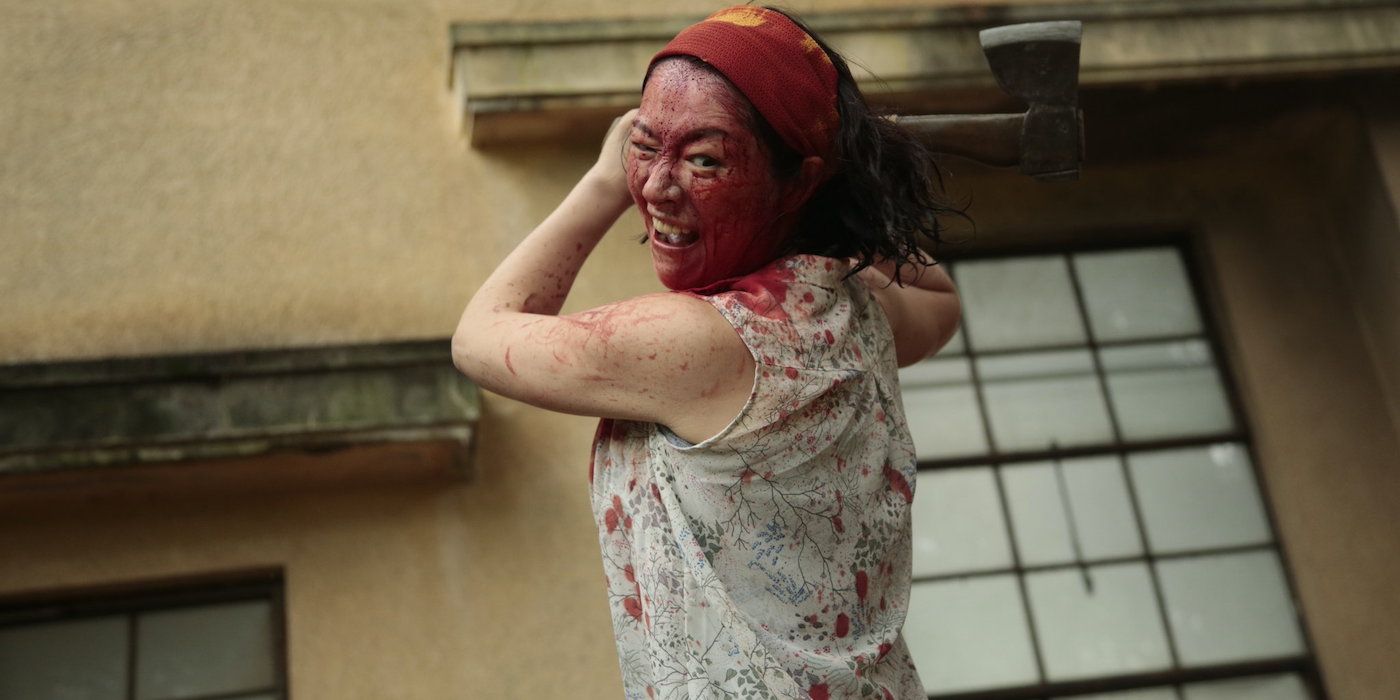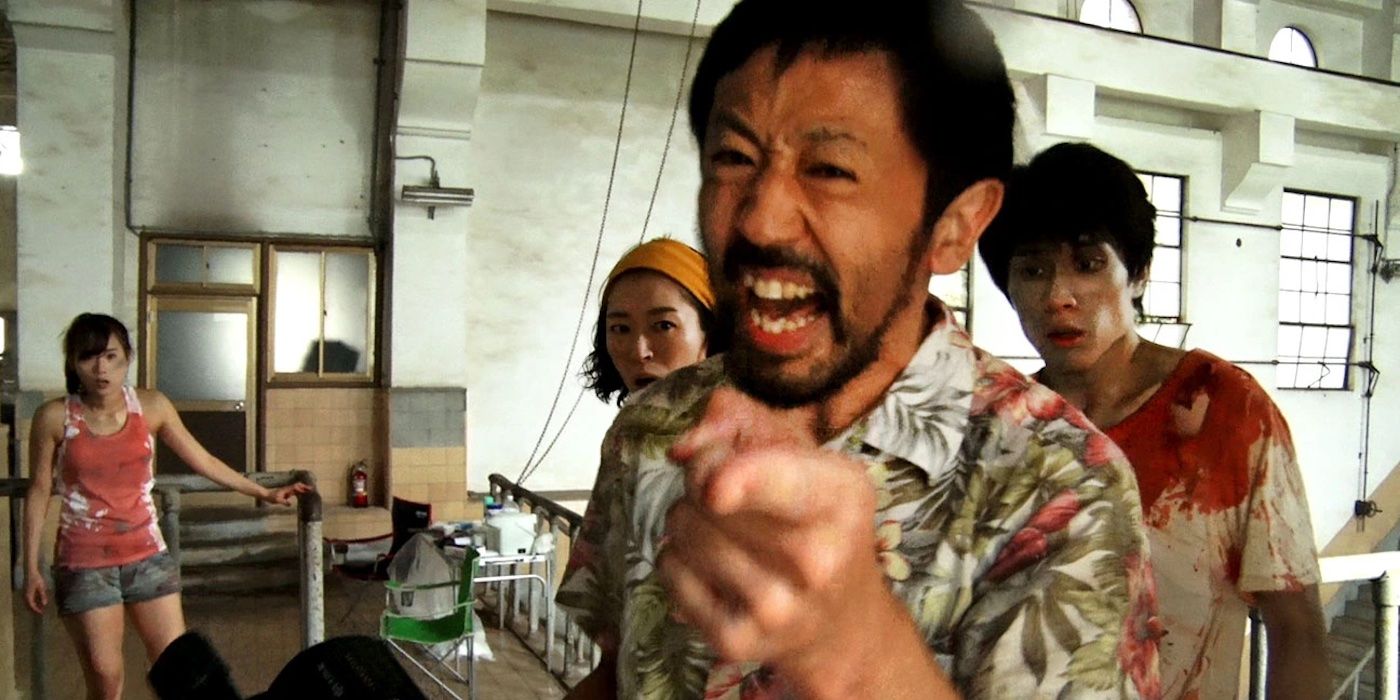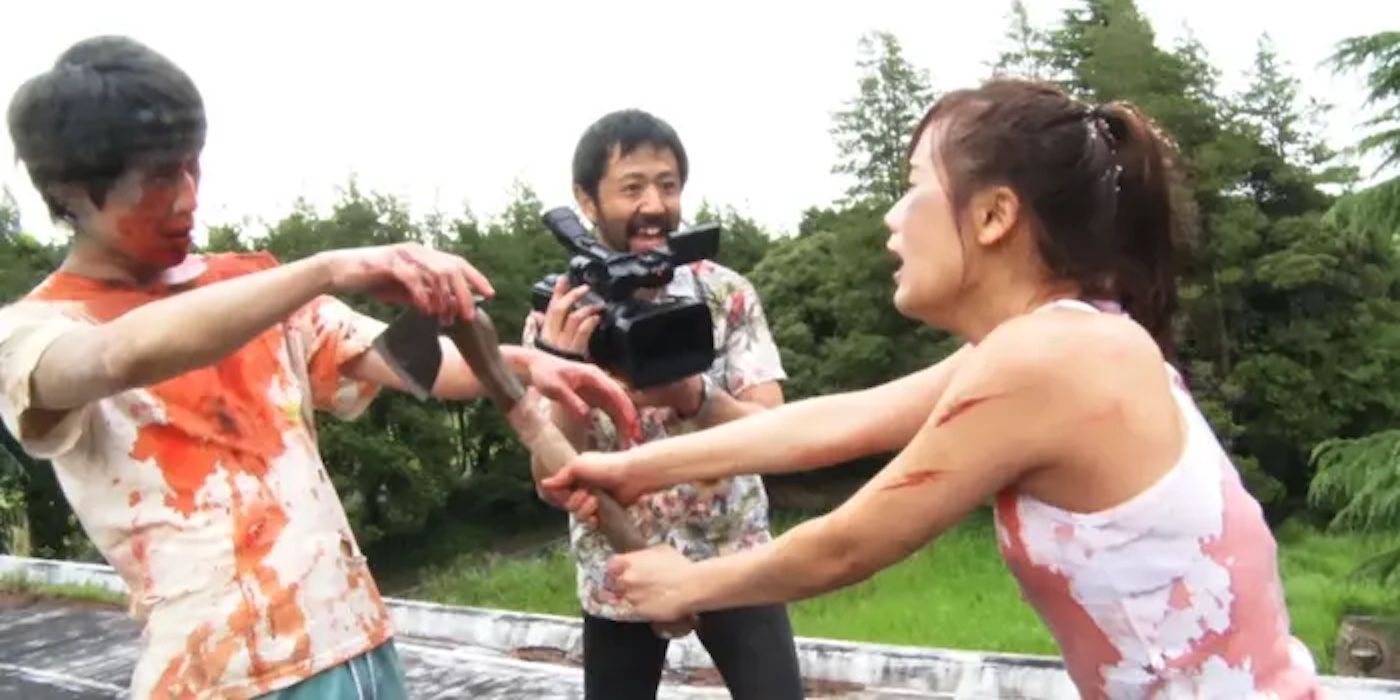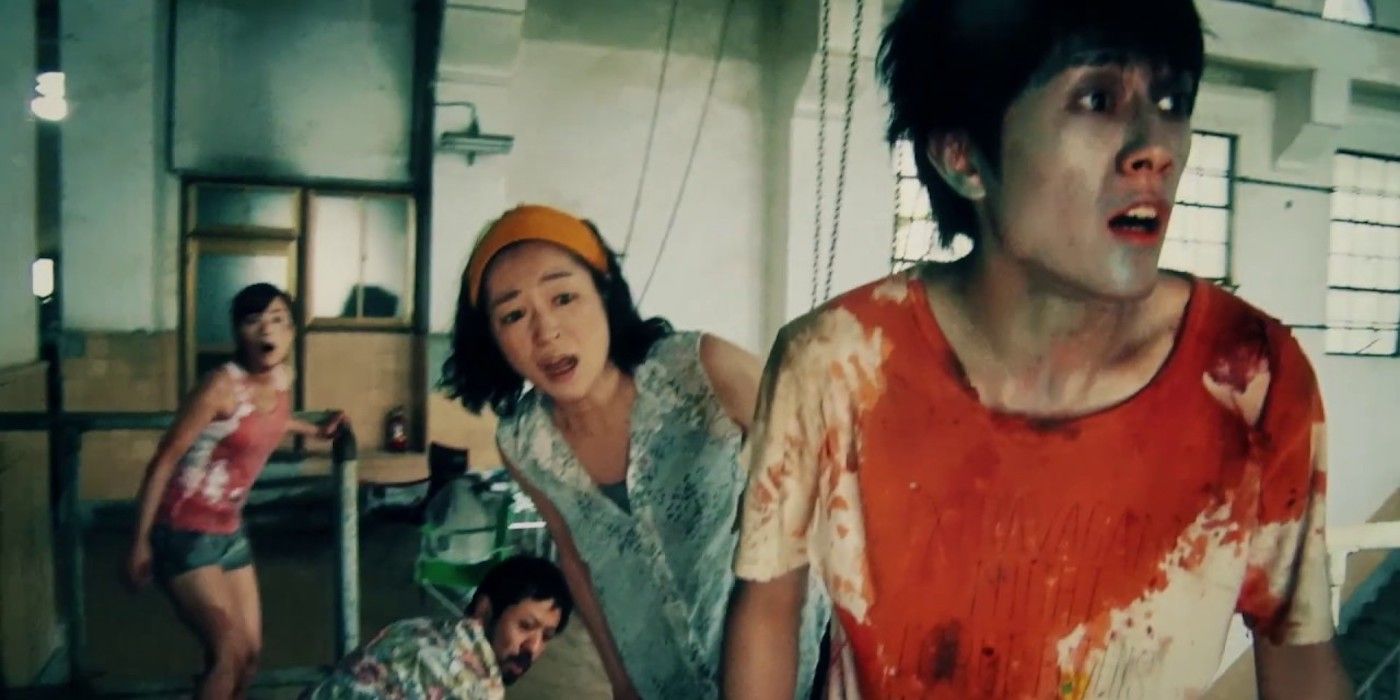There’s something special about movies, specifically something special about making them, that drives people to do strange things. From screenwriters honing their craft creating works that they hope could one day become real, to actors spending hours and hours on set getting scenes just right, to everyone else in the production doing so much to bring a picture to life with scarcely enough credit. Many movies have tried to capture the filmmaking experience, from The Coen Brothers' classic Barton Fink to Steven Spielberg’s latest film The Fabelmans. However, the movie that probably nails the process best is Shinichirou Ueda’s low-budget Japanese horror-comedy One Cut of the Dead, not only because it knows about the madness of filmmaking but because it revels in it. Utilizing excellent jokes and sharp writing, the film makes a case for being both one of the best foreign horror films to date and the single best movie about making movies ever. Be warned though – major spoilers ahead, and you owe it to yourself to see this movie fresh.
What Is 'One Cut of The Dead' About?
Zombie movies are ubiquitous in our modern era, which means that any new entries need to set themselves apart and change up the formula. Fitting for a movie about how movies distort perspective, it begins with a twist. We start our film following a film crew attempting to make a low-budget zombie film for a demanding and volatile director before a real zombie outbreak interrupts the production. The film is shot found-footage style by one of the camera crew members, who the director instructs to keep filming even as the crew starts to die around them. The two lead actors serve as our protagonists, attempting to escape, until the film ends with the main actress as the sole survivor – a prototypical final girl staring up at the camera as the credits roll.
But we’re only 30 minutes into the movie – because we’re going another layer deeper in the meta. Everything we just saw was an in-universe movie being filmed by a desperate camera crew trying to keep the production together. One Cut of the Dead is not about making a movie and being beset by zombies, it’s a story about making a movie and being beset instead by production woes. Every awkward line read, every long pause of dead air, every instance of bad pacing, or general unusual moments are slowly explained and contextualized as the film goes on. Not only is it an interesting twist, but it immediately makes you interested in watching the movie unfold. The film is now drenched in dramatic irony since you already know everything that’s going to happen. It also immediately immerses itself in reality, unlike movies like The Fabelmans or The Artist, which are about the “magic” of movies. One Cut of The Dead is fundamentally about movies themselves.
What's the Message Behind 'Once Cut of the Dead'?
It is also at this point that the movie slowly unveils its message: how much movies and making movies matter to the people making them. This message feels so much more personal due to the low budget and “low art” of the film itself and the movie within the movie that it’s presenting. Our lead character Takayuki Higurashi (Takayuki Hamatsu), is a director who has been forced to work on commercials (a trait shared by real-life directors such as David Fincher and Ridley Scott) and low-budget TV projects to make ends meet as his passion for directing has started to seep away from him. The same director character we saw earlier as a manic wide-eyed campy villain is given intense depth as a creative who no longer gets satisfaction from his work and has few avenues to properly express himself.
It’s easy to get caught up in the flash and wonder of directing when you’re following blockbuster-producing directors and Hollywood-style film sets full of superstars. One Cut of the Dead juxtaposes this with a much more personal and grounded showing of how the industry can be when you’re struggling. Most directors working today aren’t auteurs working on blockbuster dream projects, most are like Higurashi, doing what they can to make ends meet. When the opportunity to make the “one shot” zombie film is presented to him by a producer, he initially writes the production off as a complete impossibility but realizes that this might be a chance to produce something truly creative and unique for the first time in a long while. That dream of being a real creative who’s actually in charge of things and makes creative, thought-provoking work. Perhaps due to the same mania that drives one to create at all, he accepts the offer.
'One Cut of the Dead' Doesn’t Shy Away From the Realities of Making Movies
The dramatic irony that the audience is privy to is that they know that the filming is going to be a disaster – they don’t know why, but they know it will be. This is where the majority of One Cut of the Dead’s excellent jokes start to really pay off, every bit of added context is both satisfying and hilarious. At one point early in the film, the characters seemed to be awkwardly exchanging small talk with no relevance to the story – now with the added context, we realize that behind the camera, they were literally told to just “stall” as production had fallen apart. Anyone who’s worked on a set will understand the awkward discomfort of just having to smile through every unprofessional happenstance, and One Cut of the Dead derives great comedy from this truth of filmmaking.
The film gets most of its humor from the comedy of errors that is “production” itself. While other movies about movies might focus on the “genius” of a singular director or the “craft” of a particular actor, One Cut of the Dead dives deep into the gritty world of putting out fires. Actors don’t show up to set, and hasty stand-ins must be found. A production member falls ill and a makeup artist has to work on him while he’s practically unconscious. A cameraman injures himself in a fall and his assistant has to replace him on the fly. In the first part, Higurashi runs towards the camera and demands that they don’t stop shooting. The audience at the time believed that this was a part of his character, a crazy director wanting to capture real zombies attacking his cast.
The reality is far more quaint, it’s not him getting into character, it’s him almost breaking it – begging the cameraman not to stop filming even though everything around them is falling apart. To stop filming would be to lose the film, so he keeps putting out fires alongside the help of the previously unseen production crew to do so. Finding solutions, no matter how ridiculous they might be, to keep the film moving forward. It’s like watching a documentary on how some fancy restaurant is run and the camera resting on the shoulder of the restaurant's one overworked dishwasher, desperate and overworked but keeping the entire place running properly.
'Once Cut of the Dead' Shows Us a Side to Moviemaking We Don't Often See
It’s a film about the underdog, the overworked director, and the production team working through disaster after disaster. It democratizes the entire process, and it remains honest throughout. In the film’s penultimate scene, the crane that would’ve facilitated the final shot is broken: one final problem. Yet the crew once more bands together, forming a human pyramid to ensure that the essential final shot the film demands can still be completed. It’s an on-the-nose metaphor but one that works well. Film only works if it rests upon the backs of an entire team doing their all – it’s never really just one auteur, it’s everybody coming together. Once the shot is completed and the film is finished, there’s a palpable joy among the crew. Despite the mediocre quality of the finished product, and the endless trials and tribulations the entire crew suffered through to create it, there’s still that joy in seeing it brought to its end. It shows the joy that is present even in the lowest levels of production, in making B-movies and campy films and shorts seen by few and enjoyed by less. The joy of creation, of coming together and making something, infuses this film.
One Cut of the Dead is, in the end, a movie about making a bad movie. A movie that was acted poorly, produced in terrible circumstances, and in the end, almost completely fell apart due to the sheer chaos of the shooting day. Yet, once the film finishes, this “bad movie” is put in a new light, by showing how hard it is even to make something this bad, you leave the film with a greater appreciation of the people behind the camera. Even the film’s credits, which overlay how the crew actually shot the final scene of the film, drip with that love and appreciation of the craft. The film doesn’t concern itself with any one part of the process, it shows all of it, through good and bad. This makes it the best film about filmmaking because it really recognizes that making even low-budget genre flicks is hard. It’s chaotic, it’s difficult, it’s maddening, but people still do it, and One Cut of the Dead understands why.




